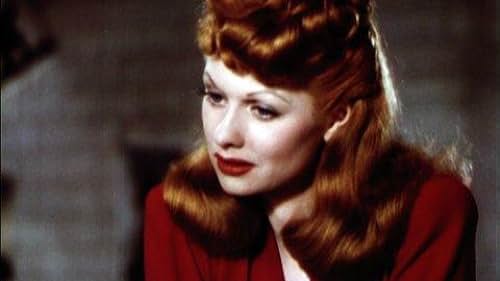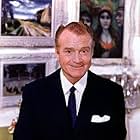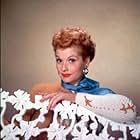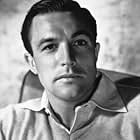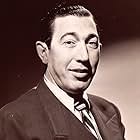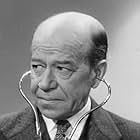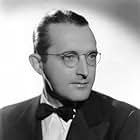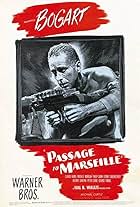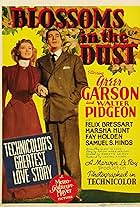IMDb RATING
6.1/10
1.8K
YOUR RATING
A nightclub's coatroom attendant who's in love with the club's singer accidentally sips a drugged drink that makes him dream he's French King Louis XV, courting the infamous Madame Du Barry.A nightclub's coatroom attendant who's in love with the club's singer accidentally sips a drugged drink that makes him dream he's French King Louis XV, courting the infamous Madame Du Barry.A nightclub's coatroom attendant who's in love with the club's singer accidentally sips a drugged drink that makes him dream he's French King Louis XV, courting the infamous Madame Du Barry.
Rags Ragland
- Charlie
- (as 'Rags' Ragland)
- …
Richard Ainley
- Marching Rebel Behind King Louis
- (uncredited)
Grace Albertson
- Perfume Girl
- (uncredited)
Kay Aldridge
- Mrs. McGowan
- (uncredited)
Ernie Alexander
- Delivery Man with Flowers
- (uncredited)
Storyline
Did you know
- TriviaMGM hairstylist Sydney Guilaroff dyed Lucille Ball's hair flame red for this film, the color that she kept for the rest of her life and became her trademark.
- GoofsDuring the scene in Madame Du Barry's boudoir when King Louis XV is chasing Du Barry around the dressing table, a man sitting in a chair can be seen reflected in the mirror.
- Crazy creditsThe Three Oxford Boys are credited orally by the MC ('Gene Kelly') as The Oxford Boys.
- Alternate versionsThis film was published in Italy in an DVD anthology entitled "Cover Girl", distributed by DNA Srl. The film has been re-edited with the contribution of the film history scholar Riccardo Cusin . This version is also available in streaming on some platforms.
- ConnectionsEdited into American Masters: Gene Kelly: Anatomy of a Dancer (2002)
- SoundtracksDu Barry Was a Lady
(1943)
Music by Burton Lane
Lyrics by Ralph Freed
Played during the opening credits
Sung by Lucille Ball (dubbed by Martha Mears) and chorus at the nightclub
Featured review
The Roy Del Ruth directed romp "Du Barry Was Lady" from 1943 I suggest is one of the most imitated of all cinematic musicals. Its sincere main storyline involving dancer lovestruck Gene Kelly with gorgeous Lucille Ball and funnnyman Red Skelton with Virginia O'Brien is solidly presented. But this Sam Goldwyn style extravagance then blossoms out to include an extended dream-fantasy sequence. The later frenetic pageant stars all the characters in a royal French misadventure with Kelly as a rebel against the corrupt King, Ball as the infamous Du Barry who falls for the handsome "Black Arrow", her chief enemy, and Red Skelton as the dreamer and inept french King Louis XV. The immense cast also includes Rags Ragland, an early Zero Mostel as the Swami, powerful Douglass Dumbrille as Kelly's rival, Donald Meek, George Givot, talented actress Louise Beavers as a lovable but bossy maid, Niagara, and the Tommy Dorsey orchestra with the Pied Pipers, at this time including Dick Haymes and Jo Stafford, plus the Goldwyn Girls. The script for this expensive and lovely musical excuse for two hours' entertainment was supplied from a play by Herbert Fields and Buddy DeSylva, adapted by Nancy Hamilton. the screenplay was provided by Irving Brecher, with additional dialogue by Wilkie Mahoney. If the viewer looks closely, one can perhaps spot Marilyn Maxwell as a Goldwyn Girl, Ava Gardner (somwhere in the background), and fine actors Emory Parnell, Kay Aldridge and Grace Albertson in bit parts. Dorsey's orchestra is given several fine numbers, featuring his many talented sidemen. But the film belongs to the Kelly-Ball mismatch and to Red Skelton, being pursued by O'Brien. The producer was Arthur Freed, who employed Karl Freund's lucid cinematography, memorable art direction of the great Cedric Gibbons, Edmund Willis's elaborate set decorations done with Henry Grace, Gile Steel's male costumes and lovely female counterparts designed by Irene Sharaff, Sydney Guilaroff's difficult hair styles and Jack Dawn's inspired makeup. Music I suggest dominates much of the film; so, mention should be made of the orchestrations by Leo Arnaud and Axel Stordahl, done with George Bassman and music adaptor Roger Edens. Sy Oliver was also involved in orchestrations along with musical director George E. Stoll. Charles Waters is credited with the choreography, including several very fine production numbers. After not having seen the film for many years, I found its theatrical basis only a bit confining--the entire main film takes place in a large nightclub the performances more than adequate and the technicolor of this production absolutely lovely. Ball is much better in the French dream sequence I judge than in the more dramatic central plot; Kelly and Skelton acquit themselves very winningly; and Dumbrille and Mostel dominate every scene they are allowed to play. This can be a most enjoyable film, I suggest, for those in the mood for pure entertainment with a stronger story line than is usual for such 1930s and 1940s extravaganzas staged by Hollywood's studio tsars.
- silverscreen888
- Mar 9, 2007
- Permalink
Details
Box office
- Budget
- $1,239,222 (estimated)
- Runtime1 hour 41 minutes
- Color
- Aspect ratio
- 1.33 : 1
Contribute to this page
Suggest an edit or add missing content


